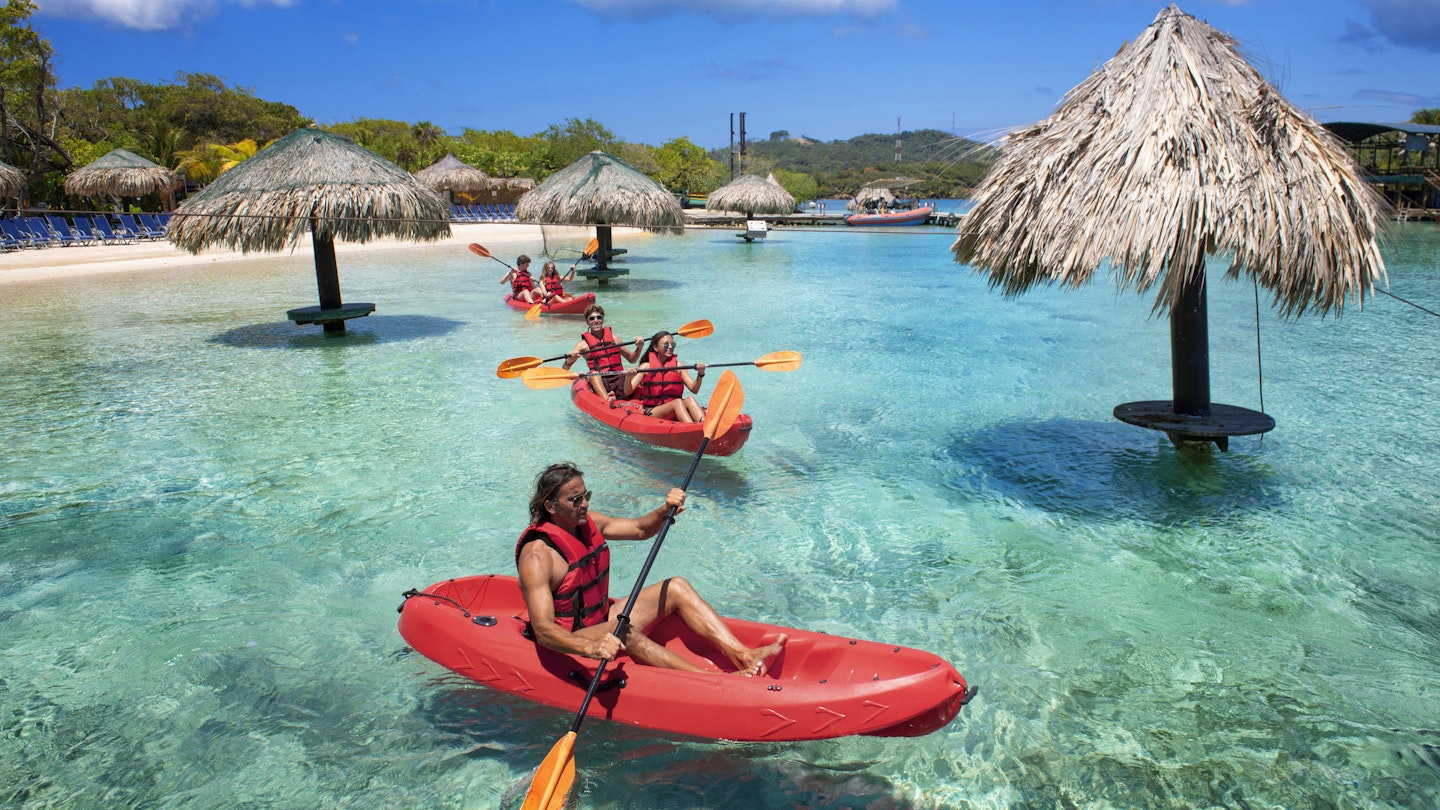The second-largest country in Central America, Honduras, is a sprawl of mountains, islands, coastal plains, and tropical lowlands. However, despite the distances involved and the varied topography, getting around is relatively straightforward.
The country is well covered by a network of flights and bus routes, with boats running to outlying islands and local variations on taxis plugging any gaps. Therefore, traveling through Honduras can be a rewarding experience for all types of travelers.
However, it’s essential to consider that travel can be weather-dependent. On top of occasional earthquakes, during the rainy season (June to October), you may be slowed down by landslides and mudslides. Thus, it is prudent to allow some extra travel time. Weather patterns in Honduras are increasingly unpredictable these days, and canceled transportation during the September to November hurricane season is also possible. This article details everything you need to know about getting around Honduras by plane, bus, boat, bicycle, and taxi.
Hop on the Plane if You’re Short on Time
If you’re on a tight schedule, you may prefer the convenience of flying. Honduras’ largest airport in Tegucigalpa connects the capital with regional destinations such as San Pedro Sula, La Ceiba, Tela, Choluteca, and Puerto Lempira. There are also airstrips on the three Bay Islands: Roatán, Utila, and Guanaja.
Domestic flights are provided by various airlines. Popular routes, such as Tegucigalpa to Roatán, La Ceiba to Roatán, Guanaja, and Puerto Lempira are served by multiple airlines. Daily flights to Utila are available from San Pedro Sula.
While ideal for international travel, Palmerola International Airport in Comayagua also offers some domestic flights.
Slow Travel on Two Wheels
Cycling around Honduras is an eco-friendly way to explore. The main roads are mostly paved and in good condition, allowing for manageable distances between towns. However, ensure you carry plenty of water and are prepared for sweltering conditions, especially in the lowlands.
Traffic outside the main cities and towns is relatively light. Most main roads have hard shoulders, and drivers generally respect cyclists. While long-distance cycling is not very common, you’ll see many locals biking to get from point A to B.
Having a touring bike with good tires is crucial, along with a comprehensive repair kit, as sourcing spare parts for anything other than mountain bikes can be a challenge.
Tour the Bay Islands and La Moskitia’s Remote Waterways by Boat
The island of Utila is reachable from La Ceiba via the basic Utila Princess catamaran ferry, which takes around an hour. Alternatively, the Utila Dream is a modern catamaran yacht that provides a more comfortable ride.
Roatán, the largest and most popular of Honduras’ islands, is accessible from La Ceiba via the twice-daily Galaxy Wave ferry, which offers a comfortable experience. Additionally, Galaxy Wave also provides daily sailings between Roatán and Guanaja, the most remote of the three Bay Islands.
The lagoons, rivers, untouched jungles, and little-visited settlements of the La Moskitia region represent one of the remotest parts of Central America. Note that this area can only be reached by colectivo boats departing from Batalla.
Save Money by Using the Bus to Get Around Honduras
Getting around Honduras by bus is straightforward. Long-distance services are divided into three categories: local buses (servicio a escala) that make many stops, faster and pricier services (servicio directo), and luxury buses (servicio de lujo) featuring air conditioning and reclining seats.
For comfort and safety, choose directo or lujo buses from reputable companies. It’s advisable to avoid overnight journeys, as they tend to be riskier than daytime travel.
Rent a Car for Greater Flexibility
Renting a car or bringing your own motorcycle provides the most flexibility for exploring Honduras. To rent a car, you will need a valid driver’s license from your home country, and several international rental companies are available at major airports.
Expect to pay around $45 per day for rental costs, potentially rising to $90 for a 4WD. Always factor in Collision Damage Waiver (CDW) which can significantly increase rental rates. While main roads, including the Panamericana, are paved and in reasonably good condition, elsewhere, conditions can vary widely based on recent rainfall.
No Uber in Honduras, but Inexpensive Taxis Are Available
Uber and other rideshare services do not operate in Honduras. However, taxis are abundant and affordable in larger cities and towns. Taxis fall into two categories: cooperativas, which have fixed routes and non-negotiable fares, and independientes, which you can hail on the street where prices are negotiable.
In rural areas, three-wheeled taxis known as “mototaxis” or “tuk-tuks” are common, providing an additional local flavor to travel.
The Thrill of Boat Travel in Honduras
No two boat journeys in Honduras are alike. The experiences can range from smooth rides through calm waters to choppy conditions that require holding on tightly. Moreover, the picturesque journey through jungle rivers in La Moskitia remaining unforgettable, regardless of the conditions.
Accessible Travel in Honduras
Travelers with disabilities may find that Honduras lack sufficient support outside upscale hotels and resorts. Public transportation is generally not equipped for those with mobility challenges. However, ferries to Roatán do offer wheelchair access.





